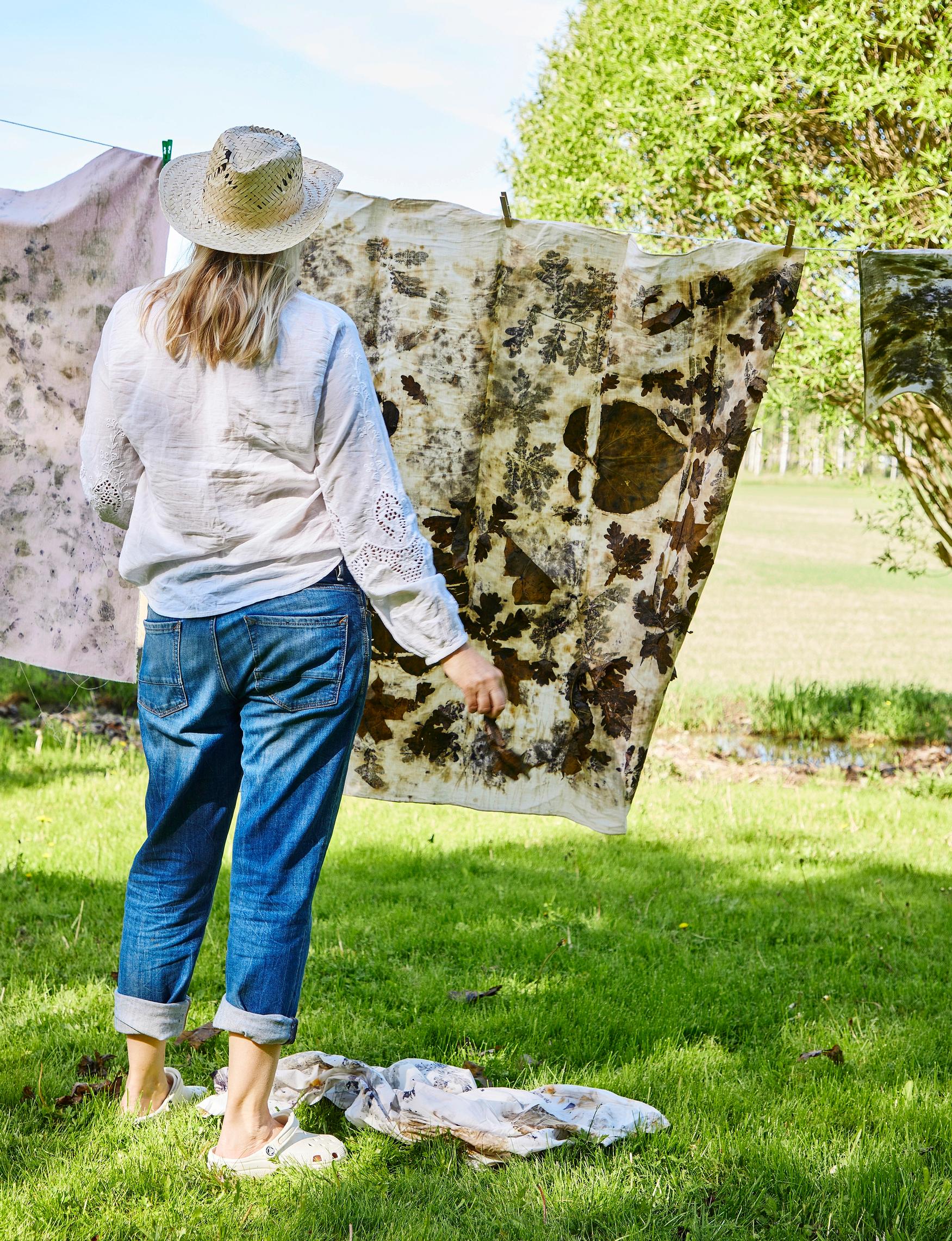
Eco-printing with plants—here’s how to decorate a bag, apron, and tablecloth with beautiful natural colors
Eco-printing is a dyeing technique that allows you to transfer plants’ natural colors and shapes onto fabric. Decorate an apron, bag, or any textile to keep enjoying summer scenery well into the fall.
Ecoprinting—supplies
- Assorted leaves and flowers
- Lightweight cotton or linen fabrics, or, for example, an apron or a bag
- Cover fabrics, such as bedsheets
- About one liter of soy for pretreatment (e.g., unflavored soy milk)
- Vinegar
- Rusty nails
- A small bowl for the iron dip
- Wooden dowels or glass jars
- Jute string
- A large pot and a steaming rack
- (rubber gloves and a plastic mat).
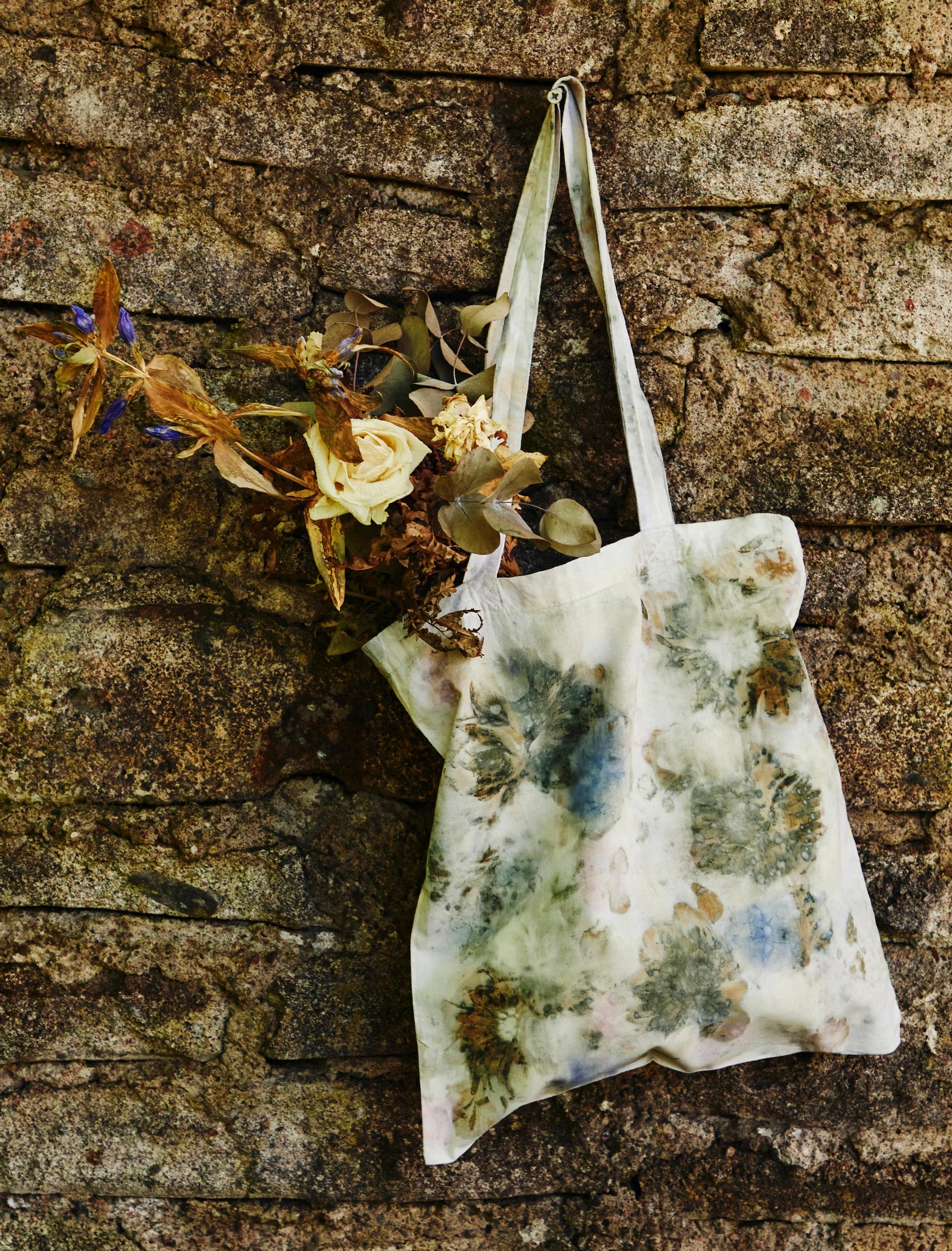
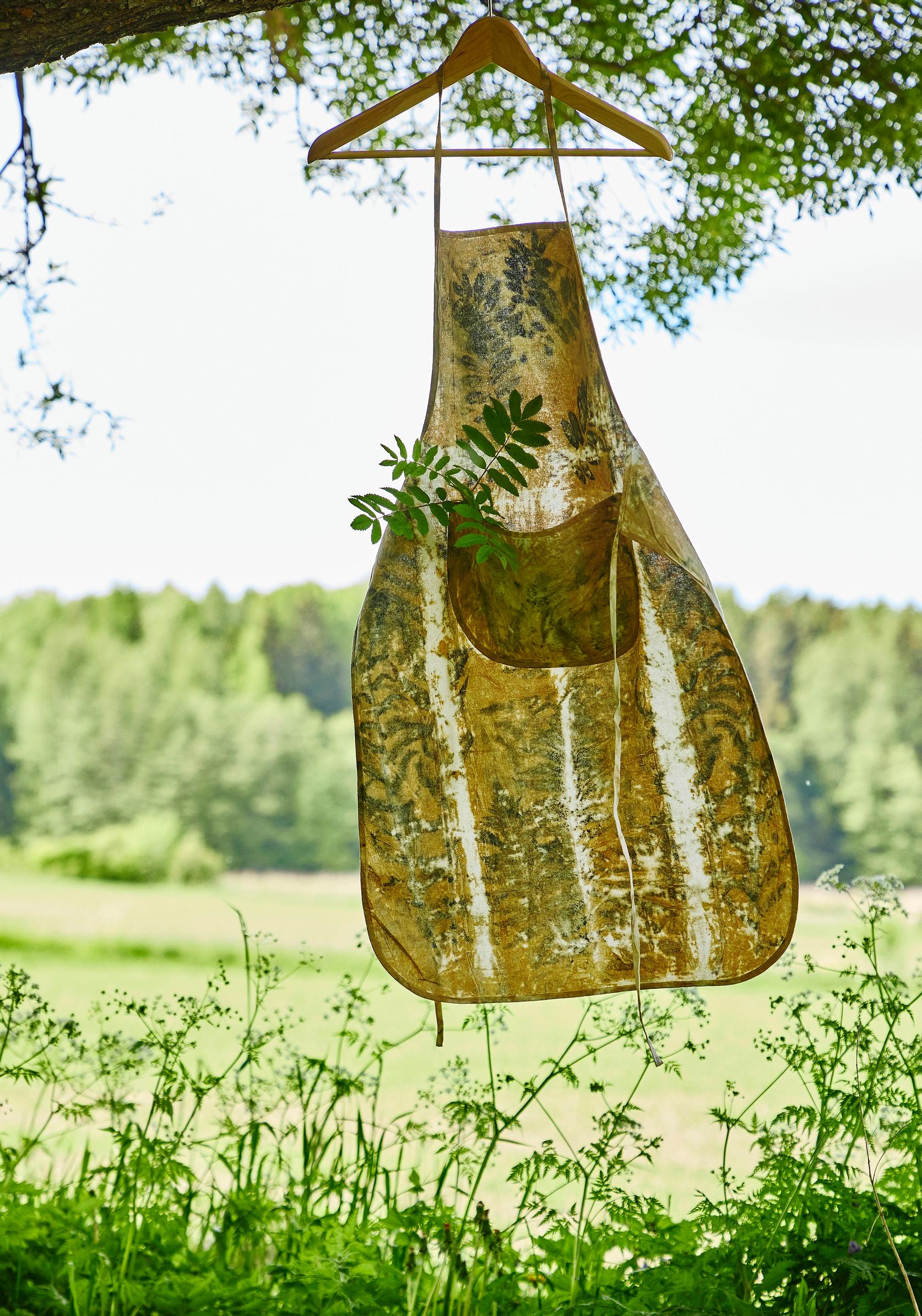
Plants suitable for ecoprinting
Leaves that are easy to find
- birch
- oak
- maple
- rhubarb
- apple and cherry tree
- lilac
- wild strawberry
- raspberry bush
- clover
Flowers that yield color include
- meadowsweet
- flowering raspberry and blackberry
- yarrow
- pelargonium
- geranium
- peony
- columbine
- rugosa rose
- dahlia
- pansy
- black-eyed Susan vine
- goldenrod
- cosmos
- carnation
- rose
- petunia
- gerbera
- chrysanthemum
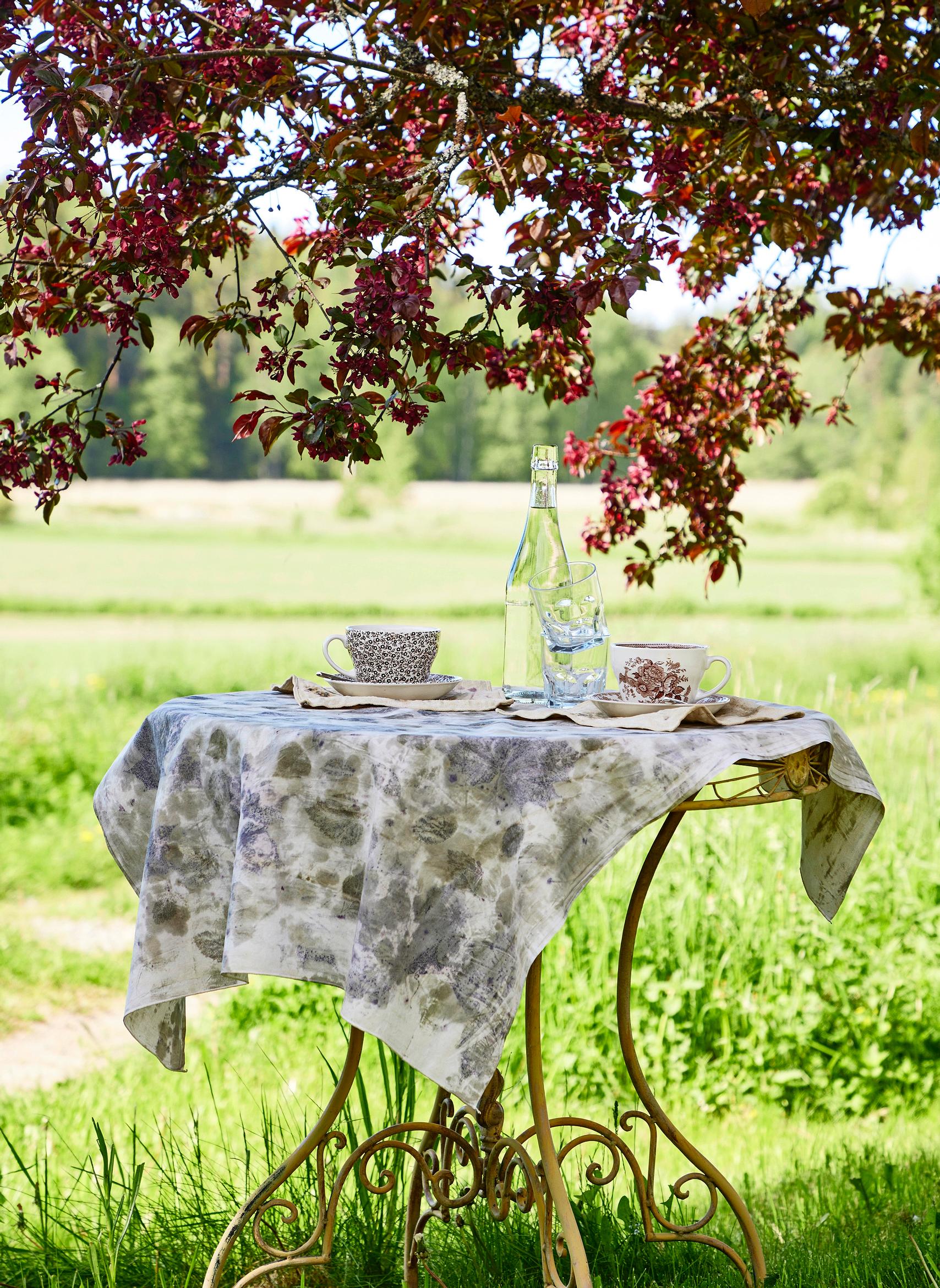
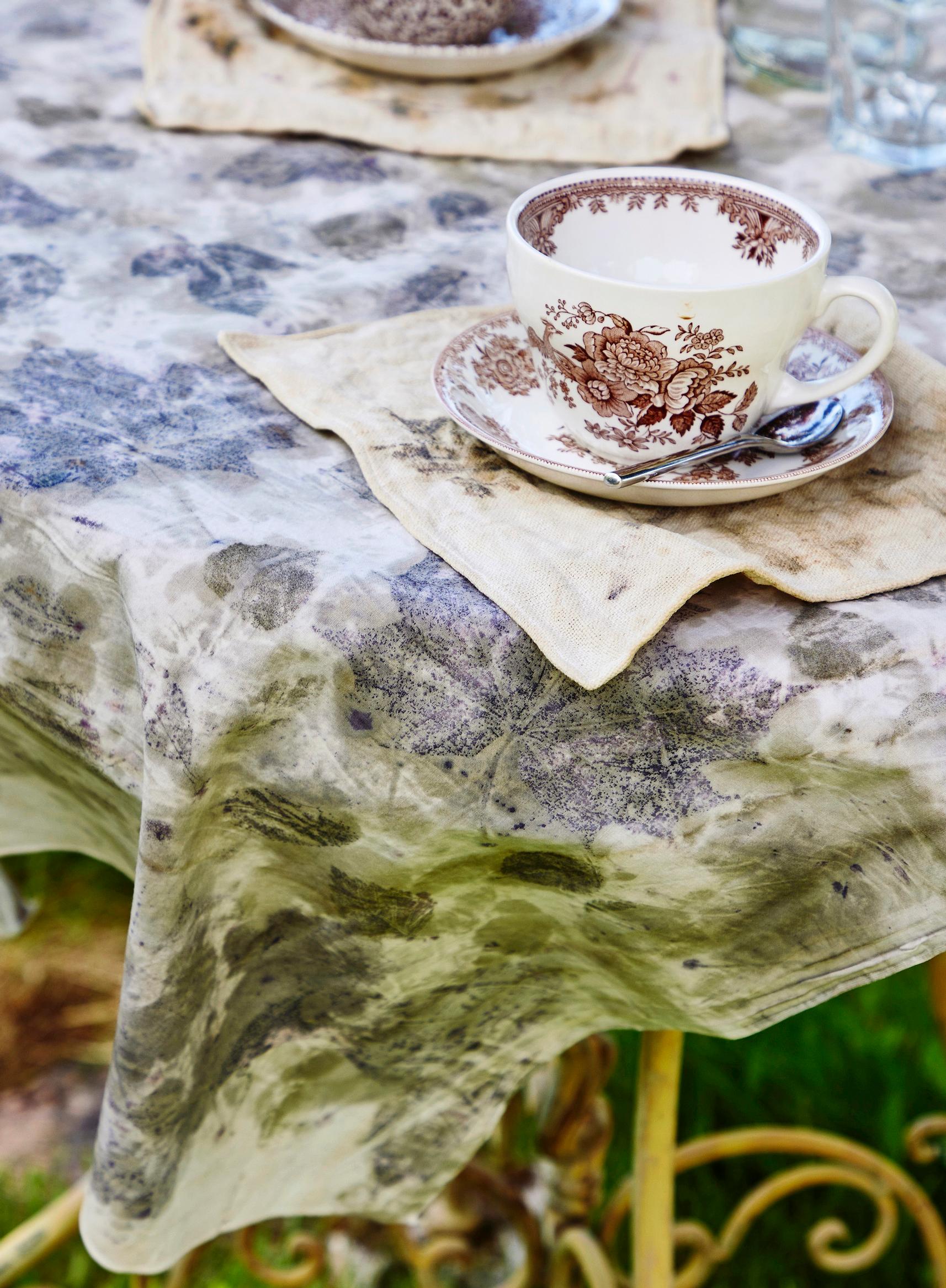
If you rub a leaf or petal between your fingers, you’ll see if it releases color easily. You can also use pressed, dried flowers for printing.
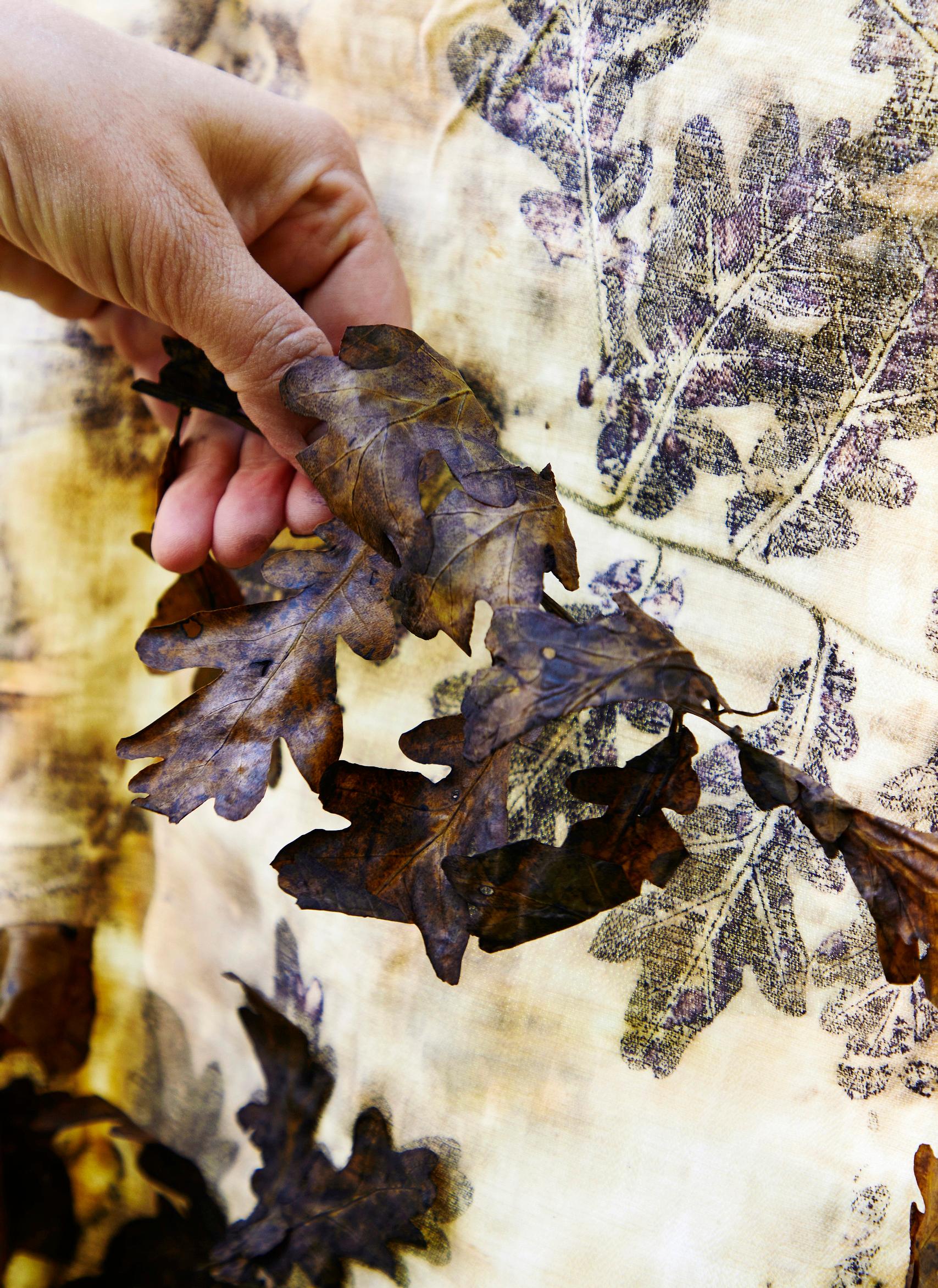
How to eco-print
Preparations
If you want, make an iron water mixture by soaking rusty nails for a week in water with one part vinegar for every six parts water. For a quicker method, soak them overnight in a solution of 2 dl vinegar and 2 dl water. If needed, you can dilute the iron solution with water during dyeing. Wash your fabrics to remove any detergent or finishing residues. Cotton and linen, which are cellulose-based, must be pretreated with soy (for example, soy milk) so plant colors adhere better. Silk and wool don’t need pretreatment. Soak the fabric in soy, squeeze out the excess, and let it dry. Soak the plants for half an hour in a mixture of one part vinegar and two parts water.
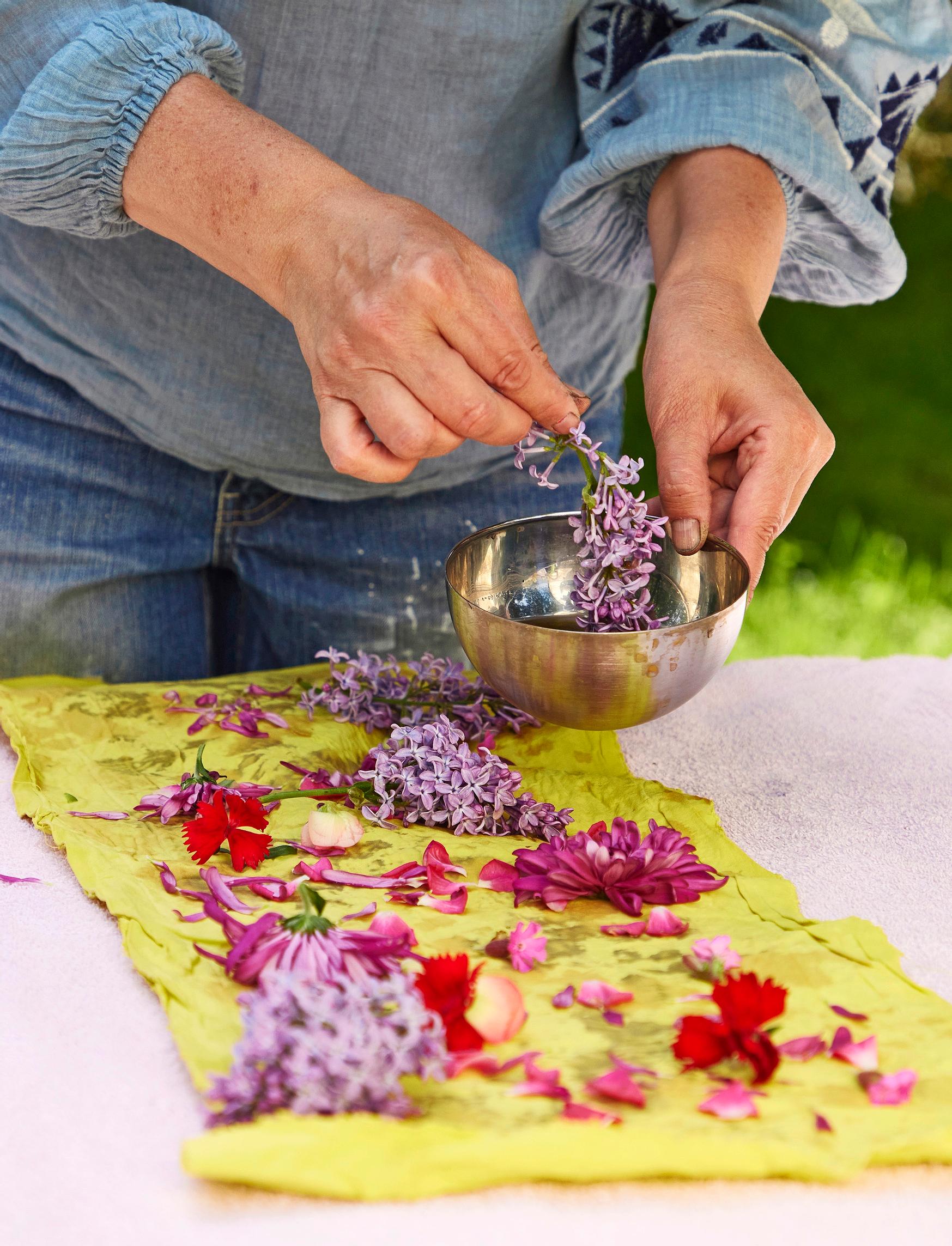
1. Place plants on dry fabric or fabric moistened with vinegar water. If you want darker, more intense prints, dip them in the iron solution first. For a watercolor-like effect, spray vinegar water on the fabric or keep the flowers dripping wet.
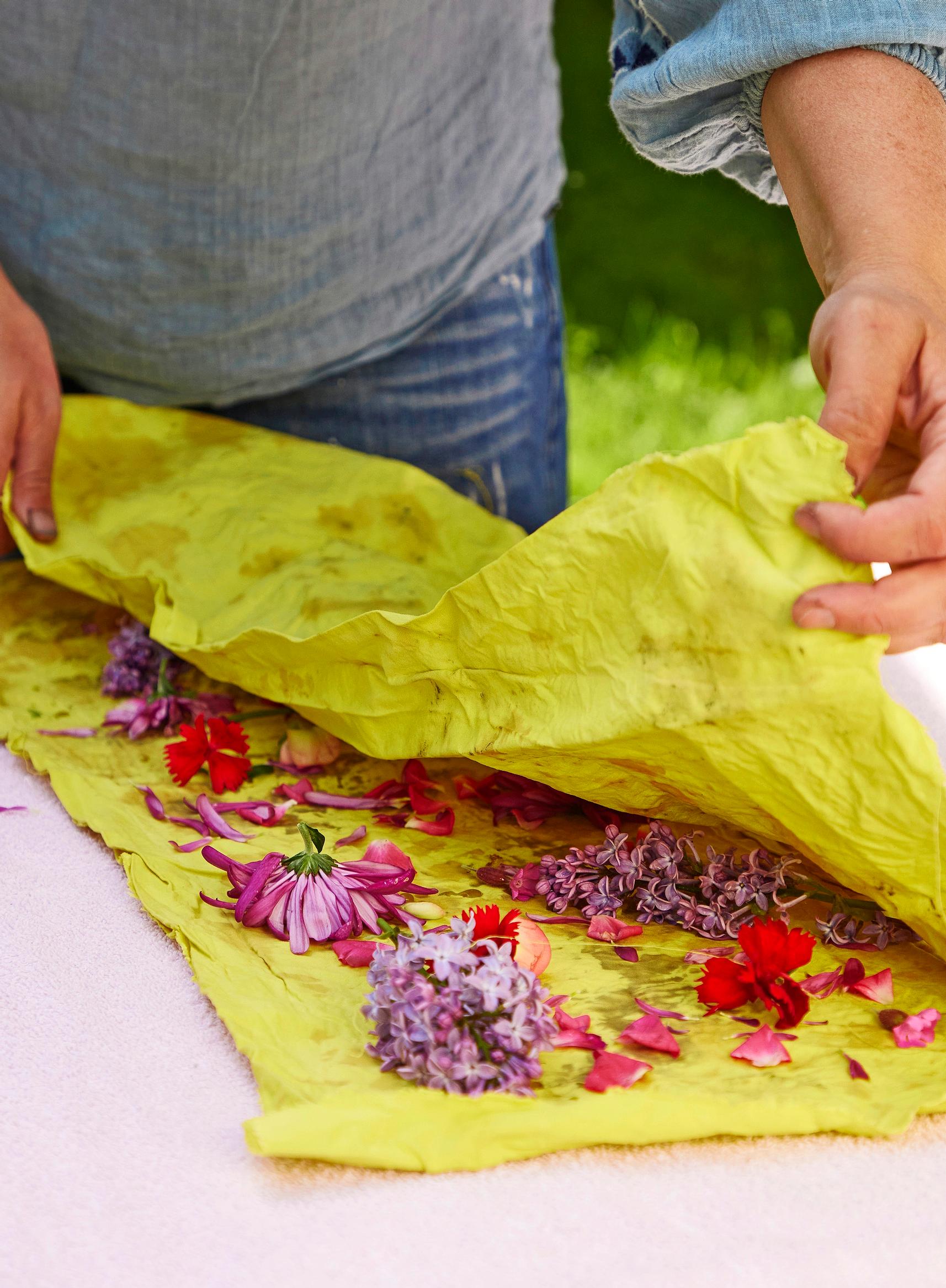
2. Place an untreated piece of fabric on top to prevent ghost images on the main layer. If you want ghost images, choose a thin top layer.
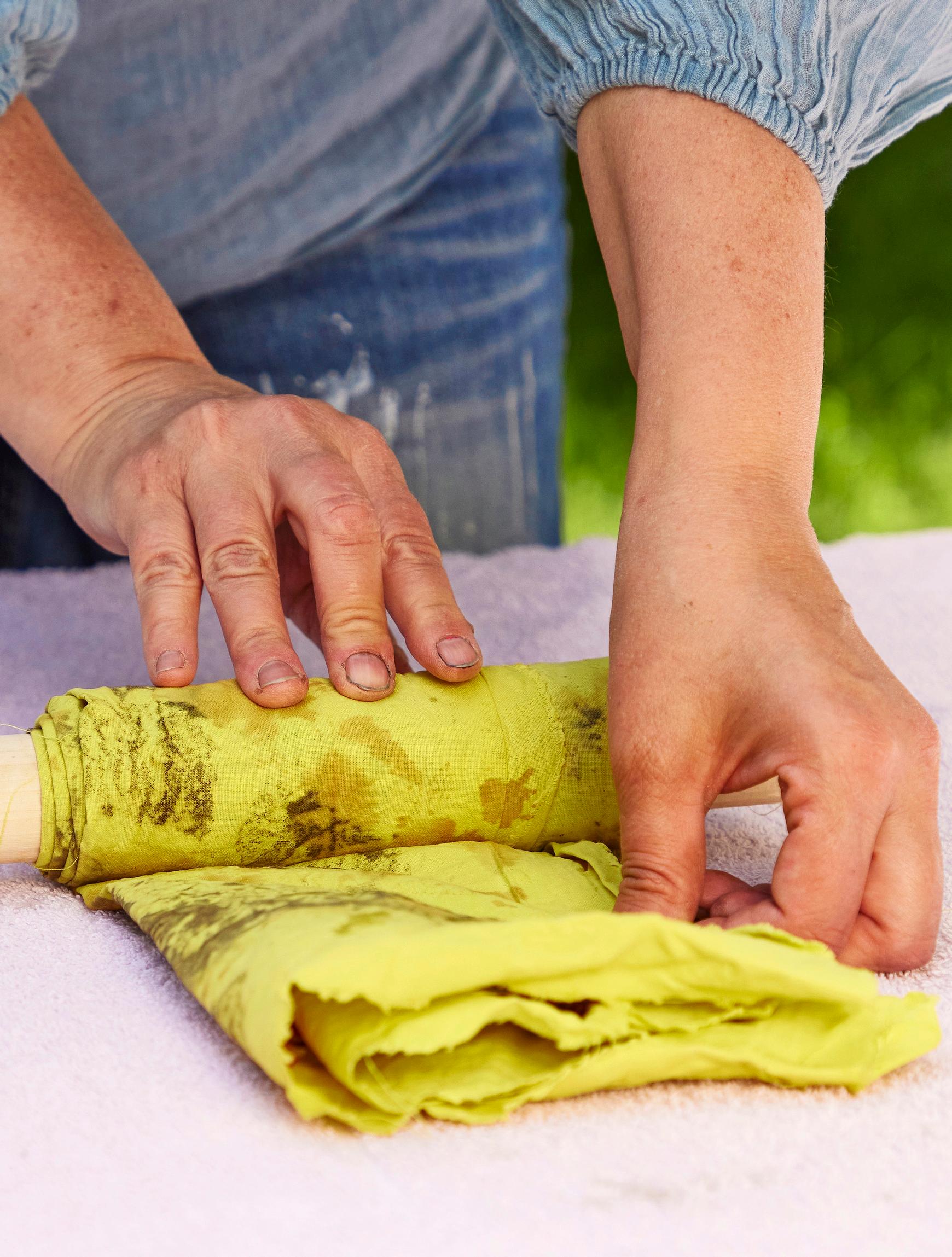
3. Roll the fabrics tightly around a wooden dowel or a glass jar.
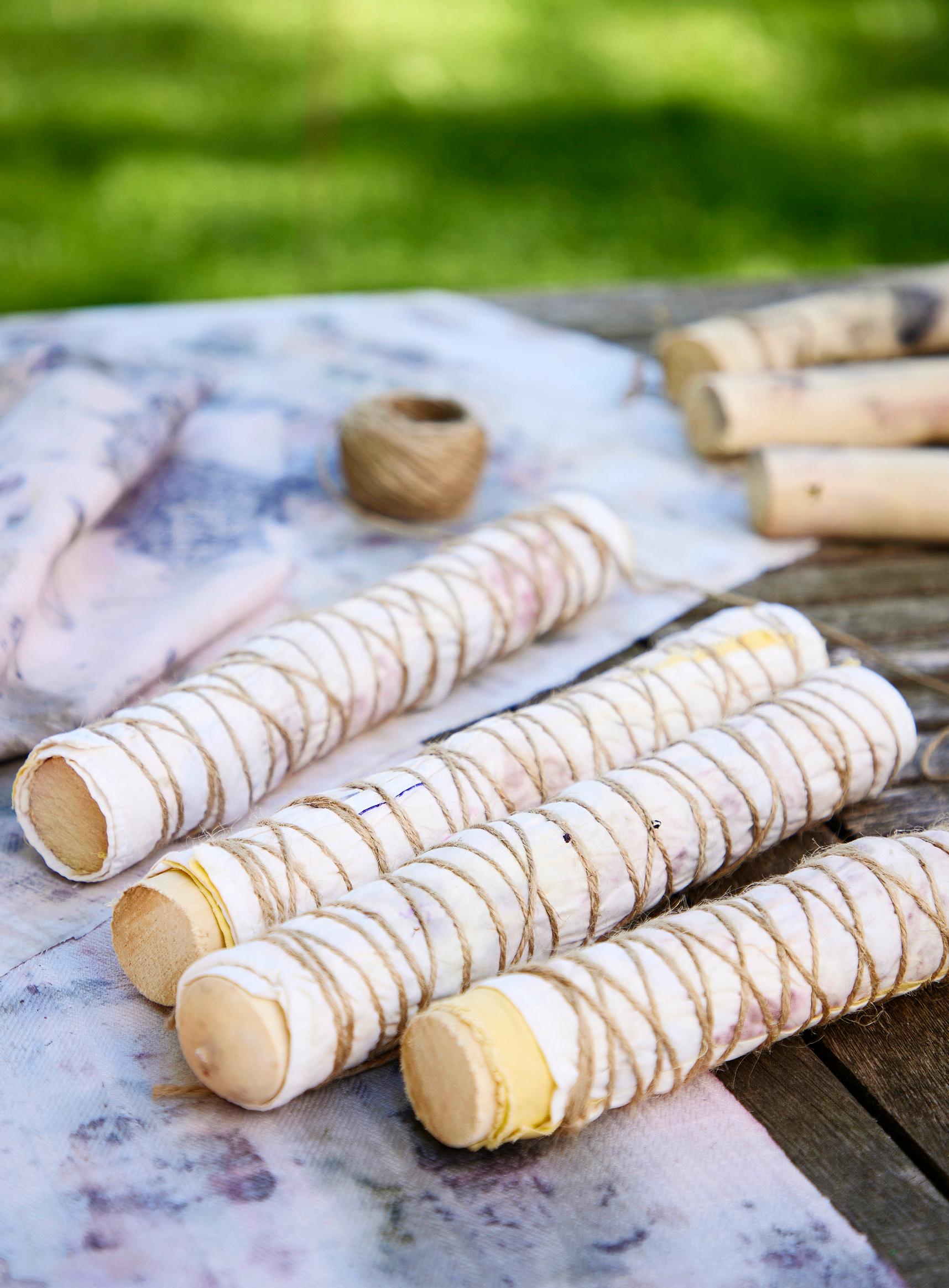
4. Tie the rolls with jute string.
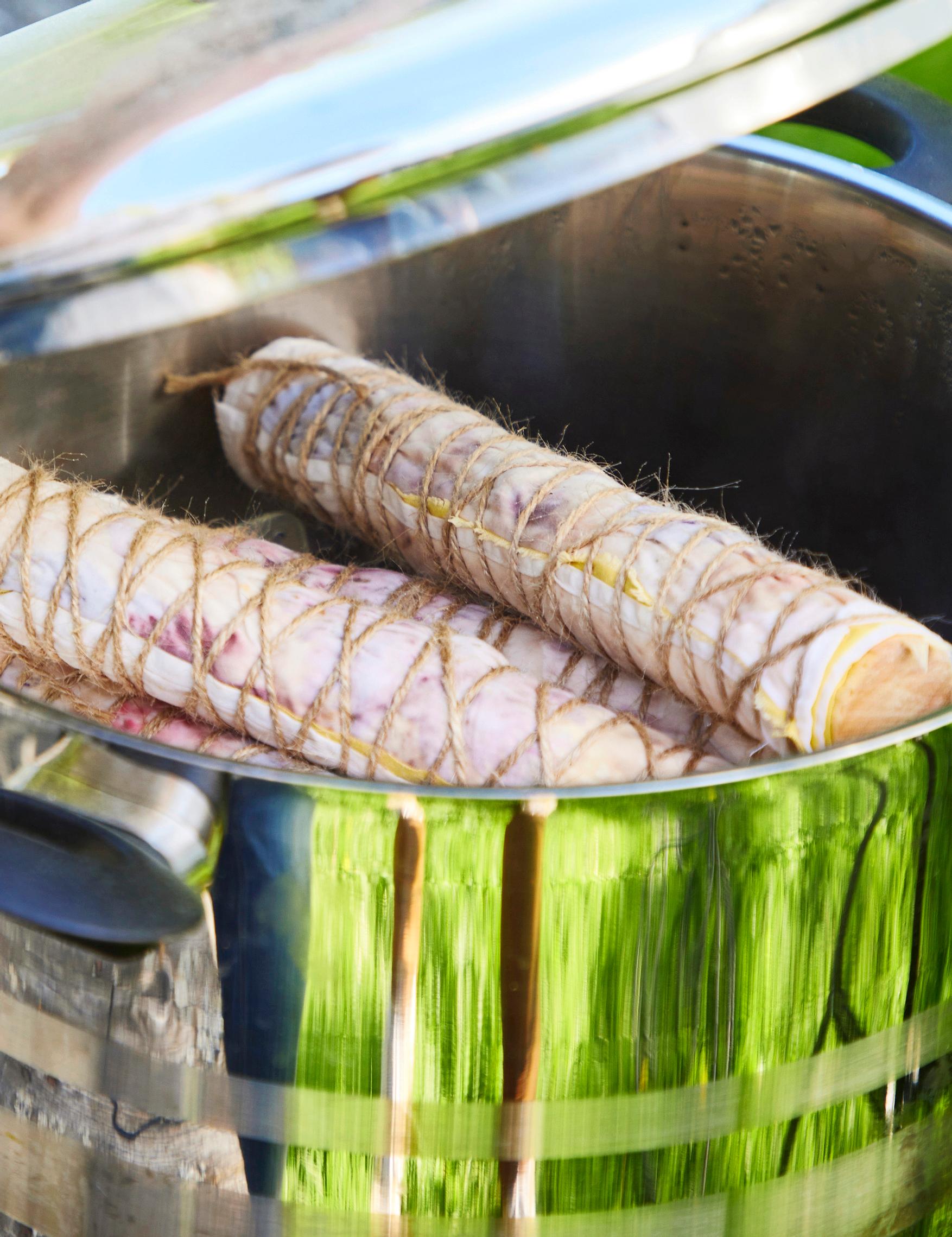
5. Steam the rolls in a water bath for about 1–3 hours. You can stack multiple rolls in the pot, but rotate them occasionally.
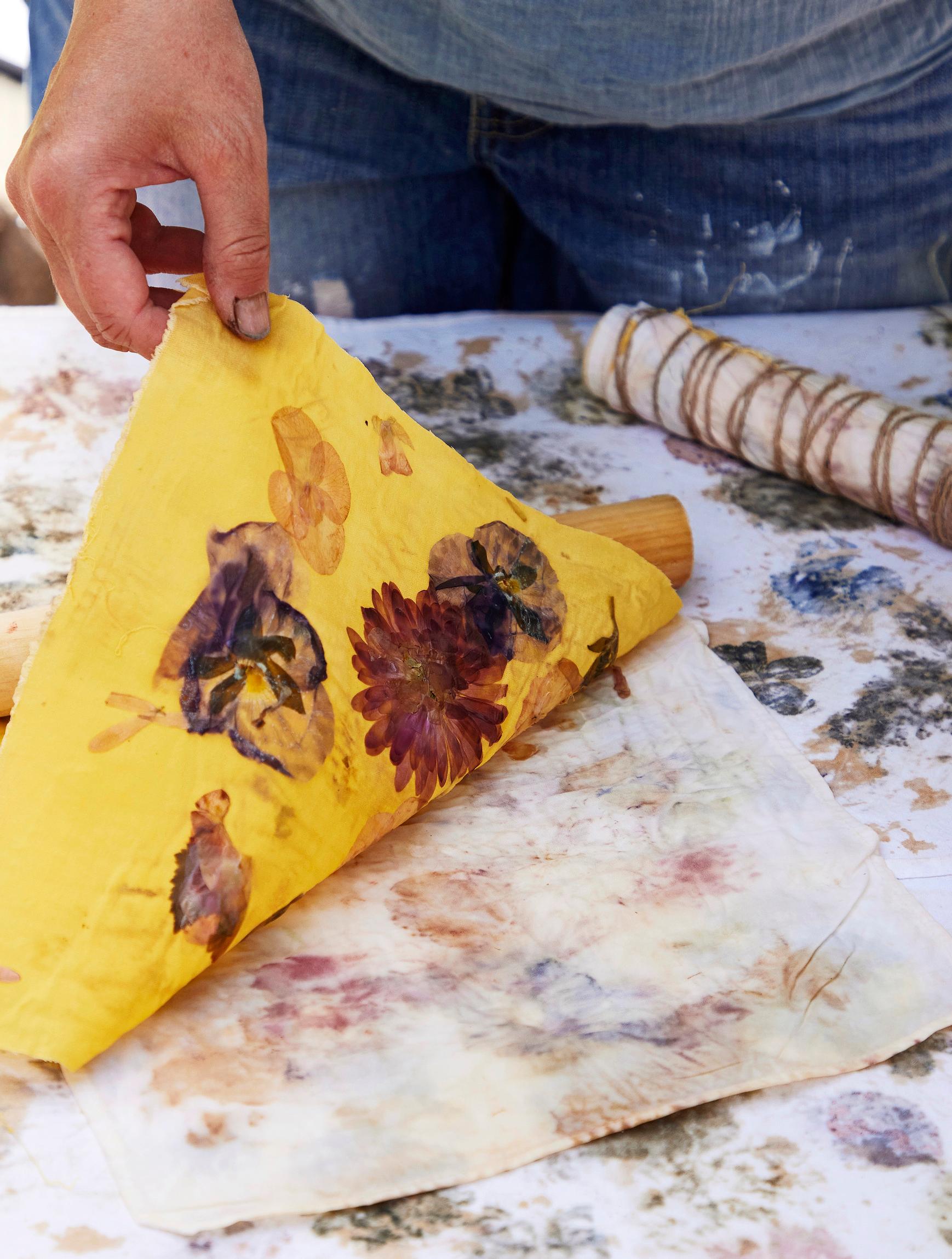
6. Let the bundles cool. You can also leave them to set and open them once dry. Unroll the fabrics and wash them by hand a couple of times with mild detergent. Let them dry, then iron both sides with a hot iron, using a thin cloth as a press cloth.


